
7 amazing birches to discover
Stunning trees to enhance the garden
Contents
The birch is often recognisable by its white trunk and small, dentate triangular leaves. However, there is a great diversity within the genus Betula. Many characteristics are common to most birches: deciduous tree, very good hardiness, resistance to diseases, discreet cone flowering, preference for cool soils, and the possibility of managing them as coppiced. Yet, the foliage, bark, habits, and dimensions can vary significantly from one species or variety to another. I invite you to discover 7 birches, each with its own unique feature: exceptional birch bark, chocolate-purple or variegated foliage, cut leaves, weeping or fastigiate habit, and dwarf cultivars.
Betula albosinensis ‘Fascination’
The Betula albosinensis ‘Fascination’ is renowned for its stunning bark. Also known as the Chinese red birch, it displays a coppery and shiny trunk. Like many birches, it also peels to reveal a new frosted white bark. It is in winter that you can best admire its original bark. Its branches bear dark green triangular leaves that turn golden in autumn, creating a beautiful wide pyramidal habit. Note that this variety is sensitive to late frosts due to its early bud burst in spring. We recommend planting the ‘Fascination’ birch away from any buildings, as its shallow root system can be uprooted in strong winds, especially if the soil is waterlogged.

Betula albosinensis ‘Fascination’
Read also
Birches: planting, pruning and careBetula nana 'Golden Treasure'
The Betula nana ‘Golden Treasure’ is an extraordinary birch. It is a dwarf species. Compact, this bush develops fine, creeping branches, forming a modestly sized rounded bush, about 80-90 cm in all directions at maturity. Its small size is not its only feature. Indeed, this cultivar is also very interesting for the colour of its foliage. These tiny crenate leaves, measuring barely 1 cm, are coloured in a very fresh acid green in spring, turning a beautiful golden hue during summer. Its golden foliage is a true autumn treasure that brightens up the garden. Then, when winter arrives, this small bush loses its deciduous foliage. Very hardy and requiring little maintenance, this dwarf birch is perfect for small gardens or in pots on terraces and balconies. It can also adorn a slope or a rockery, in soil that remains cool in summer.

Betula nana ‘Golden Treasure’
Discover other Betula - Birch tree
View all →Available in 1 sizes
Available in 2 sizes
Available in 1 sizes
Available in 2 sizes
Available in 1 sizes
Available in 2 sizes
Available in 1 sizes
Available in 1 sizes
Available in 1 sizes
Available in 1 sizes
Betula pendula ‘Royal Frost’
Very ornamental, Betula pendula ‘Royal Frost’ certainly stands out in gardens. This weeping birch is adorned with remarkable and intense purple foliage in spring and summer. Placed in full sun, its beautiful coloration is further enhanced and contrasts wonderfully with its white trunk, accented with touches of cinnamon. Changing colour in autumn, its heart-shaped leaves impress us with their yellow-orange and red hues! This medium-sized pyramidal birch (approximately 5 m tall and 3 m wide) looks stunning either as a solitary specimen or in groups. You can pair it with other decorative trees to create a black and white atmosphere: white-flowering magnolia, black elder with purple foliage, variegated pagoda dogwood, flowering dogwood, purple hazel, smoke tree, and variegated ash-leaved maple (Acer negundo).
Read also
The most beautiful barksBetula pendula 'Youngii'
Very graceful, the Betula pendula ‘Youngii’ is the quintessential weeping tree. It grows moderately (about 4 m tall) to form a beautiful parasol. Indeed, its numerous trailing branches adorned with light green leaves give it a majestic appearance. In autumn, the triangular yellow leaves create a cascade of gold. Furthermore, its white and silver bark that exfoliates in strips over time is another asset that makes it attractive even in winter when it is devoid of foliage. The beautiful structure of this weeping birch with a rounded crown makes it a perfect specimen for solitary planting, in a romantic garden or in a small space. In summer, you can relax in the shade of its wide framework and trailing branches. The only specific feature to know about this cultivar is that it adapts to all soils, except for calcareous ones!
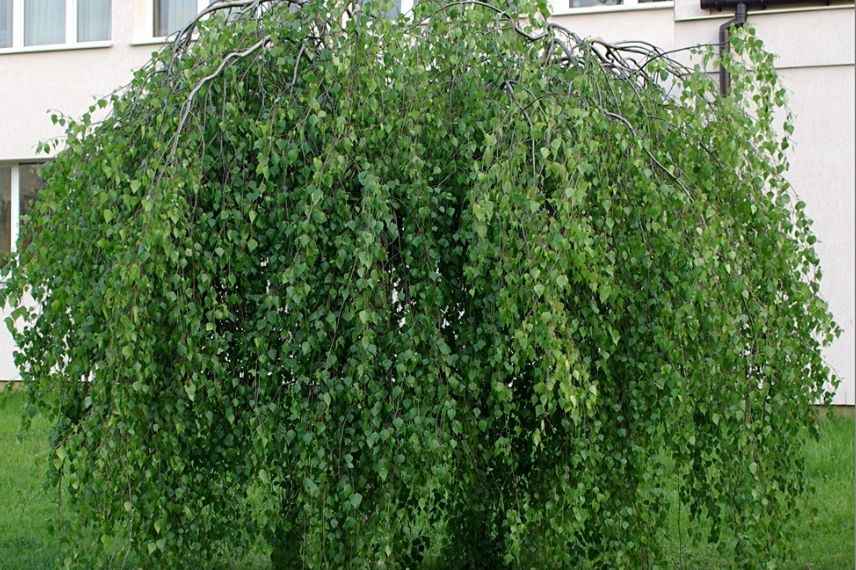
Betula pendula ‘Youngii’ (photo Babij)
Betula pendula 'Crispa'
Here is a birch tree with an unusual leaf shape: the Betula pendula ‘Crispa’. The leaves of the ‘Crispa’ weeping birch are very different from the small triangular leaves of the typical species. Particularly lobed and dark green in colour, they are also longer. This variety is also less imposing than Betula pendula, also known as the silver birch: 12 m high and 6 m wide on average for the former, compared to 20 m high and 9 m wide for the latter. In contrast, the bark of this cultivar is identical to that of the typical species, white in colour and slightly exfoliating on young specimens; it becomes rough, fissured, and almost black on older specimens. This deciduous tree, with its graceful and very elegant habit, is used as a specimen tree or as a street tree in large gardens, where its long trailing branches bearing pale yellow foliage in autumn will be very decorative.

Betula pendula ‘Crispa’ (photo Wikipedia)
Betula pendula ‘Fastigiata’
The Betula pendula ‘Fastigiata’ is a splendid variety of verrucate birch valued for its narrow, fastigiate habit, which is quite atypical for a birch. Reaching 12 m in height and approximately 4 m in width, its long branches rise to give it an almost columnar shape. Like the typical species, its deciduous leaves are triangular and dentate, dark green, and glossy. Turning buttery yellow in autumn, they disappear in winter, revealing a beautiful framework adorned with white bark. This majestic tree integrates very well into graphic gardens where its slender profile adds elegance and verticality, whether planted alone or in alignment, for example, to frame a pathway. With its narrow crown, it can be planted in limited spaces and casts little shade on nearby plants.

Betula pendula ‘Fastigiata’ (photo by Leonara Enking -Flickr)
Betula nigra ‘Shiloh Splash’
Rare, the Betula nigra ‘Shilo Splash’ was recently discovered in the American state of North Carolina. This black birch stands out for the beauty of its small variegated leaves. In spring, during their bud burst period, the young leaves are tinged with pink, then gradually unfold into green, marginate with ivory white! In autumn, they turn bright yellow before falling as winter approaches. The bark of this tree also has decorative appeal. It is silver-white on young black birches and cream-brown on older specimens. In winter, it exfoliates in strips to reveal a lighter new bark. You can plant it in partial shade in groups or simply highlight it as a focal point, standing alone at the centre of a bed. Enjoy its variegated foliage to brighten a shaded area of the garden. Growing naturally along waterways, note that this deciduous tree prefers moist soils. Reaching 9 m in height, do not prune this tall pyramidal birch, as its silhouette is a beautiful aesthetic asset.
For further reading
Learn more about Birches: planting, pruning and maintenance
Discover our advice sheet to choose a birch
Everything you need to know about Diseases and pests of birch
Find our tips on how to train a tree as a coppice
Discover why leaves change colour and fall in autumn
Watch Olivier’s video on the Himalayan birch
- Subscribe!
- Contents
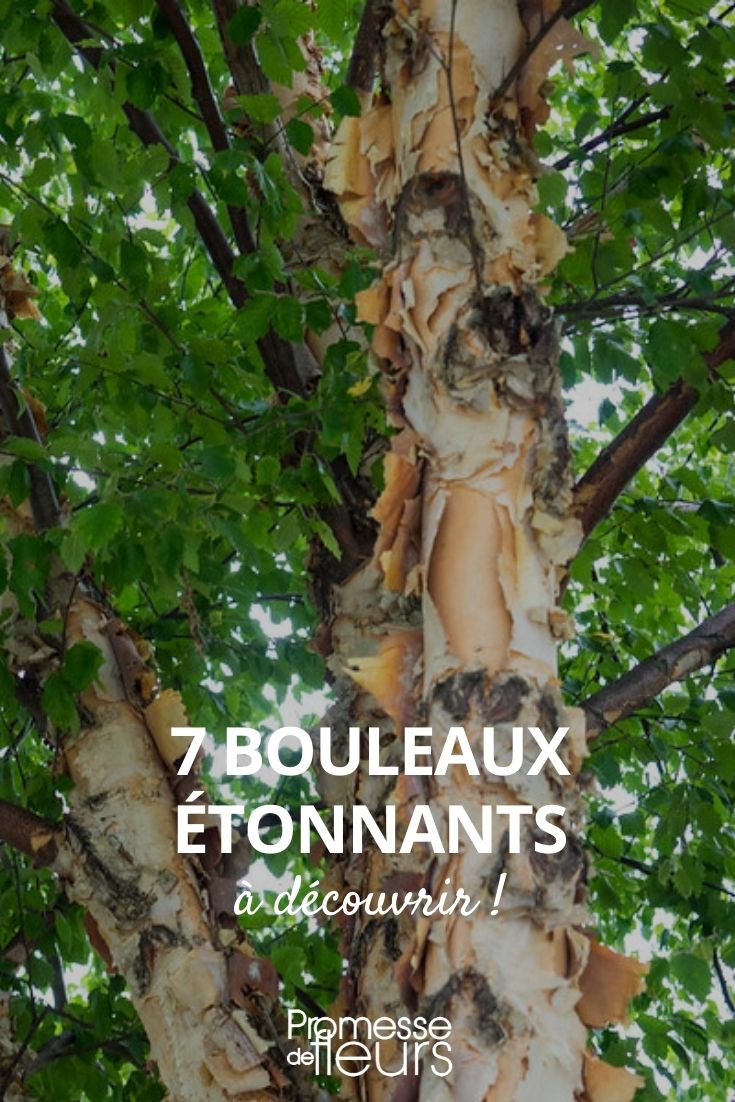































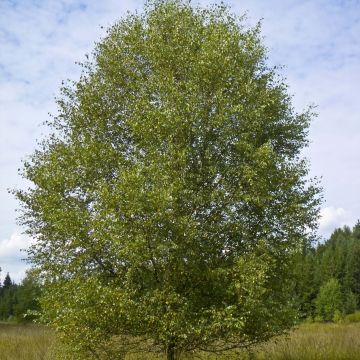
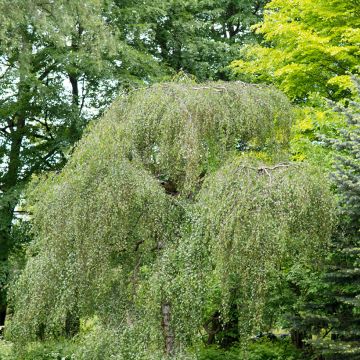
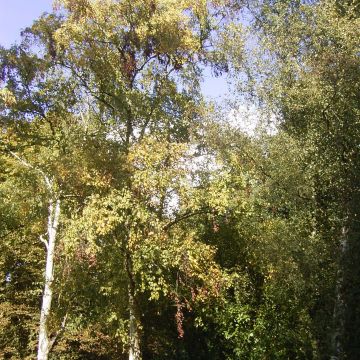
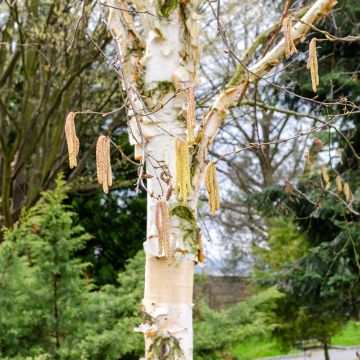
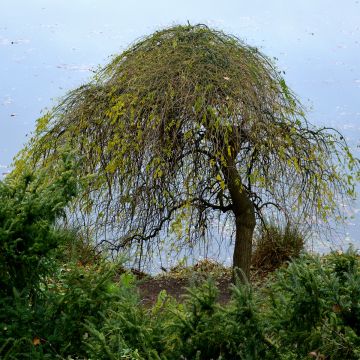
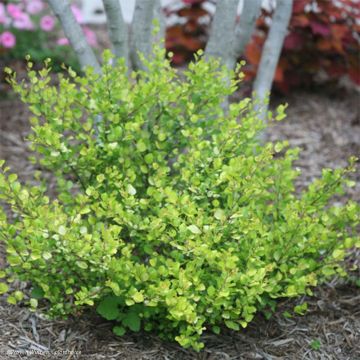
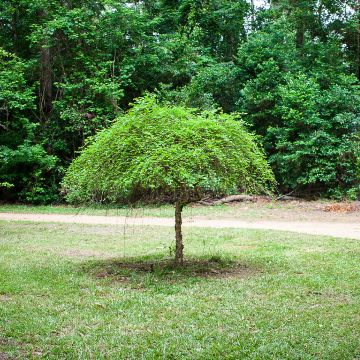
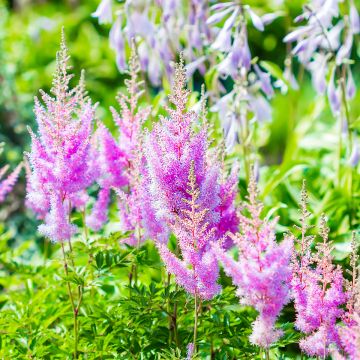

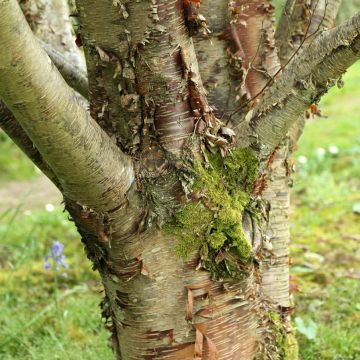
Comments